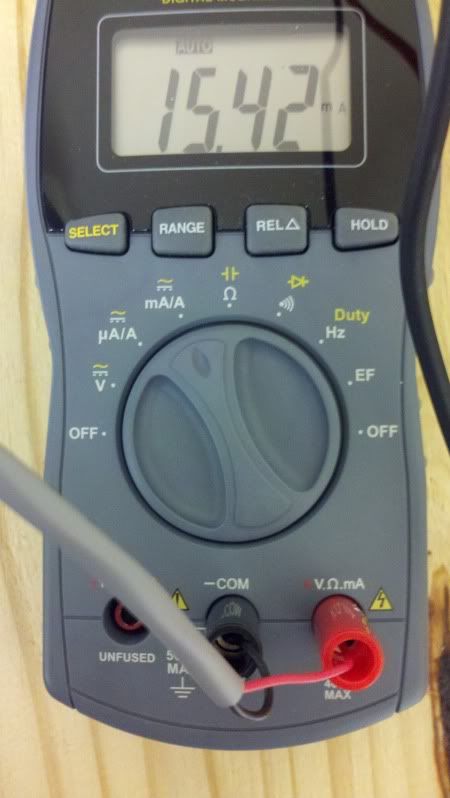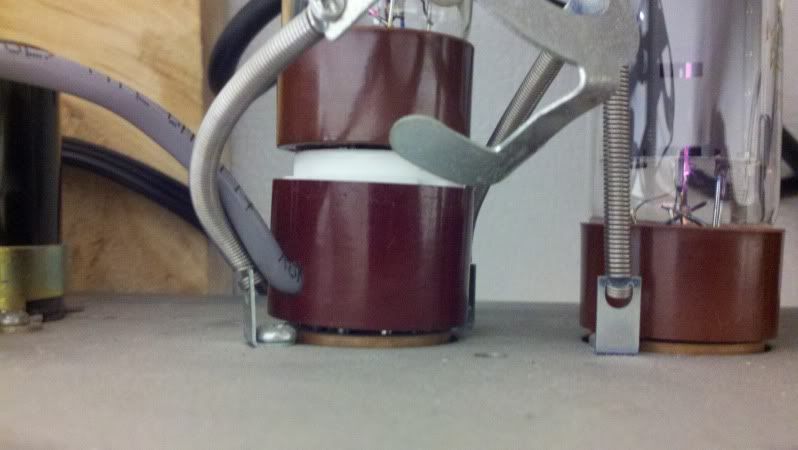V-man
Well-Known Member
- Joined
- Jan 25, 2009
- Messages
- 6,661
- Reaction score
- 8,262
A ways back I got a dual bias probe and a meter and started biasing some of my amps. Readings were disturbingly low on my 2550, which I chalked up to an old bias pot component, but then the same lowballs were coming on my 4100.
Fast forward to today, I brought the 4100 into the office (with a modern outlet, something I figured may be contributing to the problem) and I am getting some bizarre readings all over again. As such, I was hoping you could help me isolate what the hell is the problem with this biasing - whether the amp(s), the tool(s), or the user.
1. 1993 4100 Dual Reverb with 4 Winged-C EL34 Power Tubes, through a MF 400 cab @ 8ohms with the HIGH power "Pentode" mode engaged.
2. Tools used: Dual bias probe and multimeter in the mA/A position.
3. Inserted bias probe sockets on 1 and 4 (the outer tubes), then installed all 4 power tubes.
4. Measured plate voltage by inserting probe at pin #3 on tube(s), registering 466V.
5. Applying Bias Formula: B = Max Watt Dissipation/Plate voltage X 70%, I arrive at 25W/466 x .70 = 37.5 (or 34.8 for 65%).
6. If my math AND interpretation is correct, EACH tube should register @ 30-something mv and I will fine-tune them within 1 milliamp of each other, somewhere in the range of 35 to 38 milliamps.
What I am getting is about 15 milliamps, and I have about 1.5 milliamps worth of play with the bias trim pot? What is the deal here? Even if I am wrong with my understanding (e.g. it should be 37 milliamps per PAIR, not per individual tube) the readings are too cold.
Here is a shot of the multimeter to demonstrating the readings and setup, to indicate what an idiot I am/am not:

The only other thing that seems off is the pins in the bias meter do not seat 100% thanks to ill-placed wiring (which interferes with the tube retaining spring) I don't think this really is an/the issue, but I figured I'd throw it in to give you as much info as possible to help diagnose.

Any idea what's going on here?
Fast forward to today, I brought the 4100 into the office (with a modern outlet, something I figured may be contributing to the problem) and I am getting some bizarre readings all over again. As such, I was hoping you could help me isolate what the hell is the problem with this biasing - whether the amp(s), the tool(s), or the user.
1. 1993 4100 Dual Reverb with 4 Winged-C EL34 Power Tubes, through a MF 400 cab @ 8ohms with the HIGH power "Pentode" mode engaged.
2. Tools used: Dual bias probe and multimeter in the mA/A position.
3. Inserted bias probe sockets on 1 and 4 (the outer tubes), then installed all 4 power tubes.
4. Measured plate voltage by inserting probe at pin #3 on tube(s), registering 466V.
5. Applying Bias Formula: B = Max Watt Dissipation/Plate voltage X 70%, I arrive at 25W/466 x .70 = 37.5 (or 34.8 for 65%).
6. If my math AND interpretation is correct, EACH tube should register @ 30-something mv and I will fine-tune them within 1 milliamp of each other, somewhere in the range of 35 to 38 milliamps.
What I am getting is about 15 milliamps, and I have about 1.5 milliamps worth of play with the bias trim pot? What is the deal here? Even if I am wrong with my understanding (e.g. it should be 37 milliamps per PAIR, not per individual tube) the readings are too cold.
Here is a shot of the multimeter to demonstrating the readings and setup, to indicate what an idiot I am/am not:

The only other thing that seems off is the pins in the bias meter do not seat 100% thanks to ill-placed wiring (which interferes with the tube retaining spring) I don't think this really is an/the issue, but I figured I'd throw it in to give you as much info as possible to help diagnose.

Any idea what's going on here?
